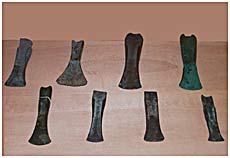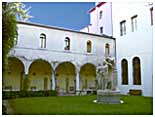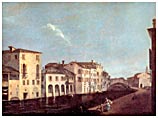| THE MUSEO CIVICO LUIGI BAILO (The L. Bailo's Museum), Borgo Cavour, 24 - Treviso |
| |
| The Museo Civico Luigi Bailo (L. Bailo’s Museum) was founded by homonymous
abbot in 1879 and it is the main current seat of the museums of Treviso, together with the complex of
Santa Caterina (with the Museum, the cloisters and the Church) and the Ca’ da Noal Museum. |
| |
|
 |
The museum is located near the present town library
where there was the friars Gesuati’s monastery in 16th century and then in 17th century the friars Carmelitani
Scalzi’s monastery.
The year of its inauguration was the same in which the near church was demolished and the friars Carmelitani’s
monastery was dismantled. The indoor spaces of the Museum may be divided according to displayed works in: Sezione
Archeologica (Archaeological Part), Pinacoteca (Picture Gallery), Galleria Comunale d’Arte Moderna (Modern Art
Gallery). |
|
| |
The Sezione Archeologica (Archaeological Part)
occupies nearly whole ground floor and the sixteenth-century cloister where we may see several finds which
were built in the Copper Age, in the Bronze Age, in the Iron Age and in Paleoveneto.
In the rooms there are
many tools as bronze swords, hatchets, buckles, earthenware which were found both inside the Walls of Treviso and along the river Sile. Some ceramic and earthenware artefacts make an exception: they were made in
Magna Graecia (South Italy) and they were presented Luigi Bailo when he was the director of the Museum. |
 |
 |
|
| |
|
The rich Pinacoteca (Picture Gallery) develops into several rooms, the most
part of these is located on upper floor and they surround the two cloisters.
In the Pinacoteca you may see some wonderful works coming both from some legacies and from the Chiesa di San Teonisto (Church of St. Teonisto) where they were kept. |
|
| |
|
|

The indoor cloister in L. Bailo Museum |
|

Sperone Speroni’s portrait
by Tiziano Vecellio
(1473 - 1576)
|
|

Medoro Coghetto Buildings along the rivers Sile on the St. Andrew’s bank |
|
| |
| The Pinacoteca of Museo Civico Bailo (The Bailo’s Museum)
evidences the development of painting in Veneto between the 15th century and the 17th century by a significant amount of
canvases made by artists not only from Treviso, but also of other towns from Veneto. |
| |
| The "Crocefisso" painted on a panel by Giovanni da
Bologna is one of the most interesting works, then there are some portrayals of the Virgin with her Child made
by artists as Giovanni Bellini, Jacopo da Valenza and Cima da Conegliano, several views of Treviso by Medoro
Coghetto, which are the fullest of charm among these works as Piazza dei Signori (the main square) and the
Duomo (the Cathedral) and then we may see the "Monaco cassiere" by Lorenzo Lotto and many other canvases by
Paris Bordone, by Tintoretto, by Tiepolo, by Francesco Guardi, by Tiziano Vecellio and many others. |
| |
| [
the Modern Art Gallery: other information ... ] |
| |
| |
| |
|
| |
| |


